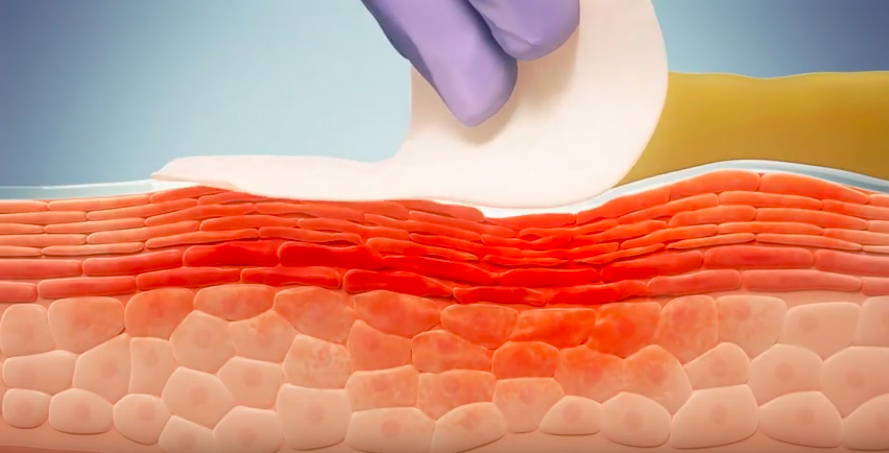
Developing products that can improve people’s health and even potentially save lives is a labor of love for 3M Scientist Bob Asmus.
As rewarding as his work is, the process of developing health care solutions that are applied to patients’ skin can be challenging, too. Working on products for human skin is complex. Skin stretches, it sweats, and everyone’s skin is different. Another challenge? You can’t easily test your hypothesis when it will be used on the human body.
I have to work on hunches. I can’t test things in a lab in a way that replicates the real-life situation. Bob
One of his product developments – 3M™ Avagard™ Hand Hygiene Solutions – was especially complicated. He had to find just the right solution that would provide antimicrobial protection, be gentle on skin and still feel right.
I had to become a cosmetic chemist. There are a myriad of things in hand lotion that can go wrong and make it ball up or become draggy and tacky. Bob
But even with all the challenges he faces, Bob says his biggest reward is knowing that he’s creating products that can save lives or make life better.
A formula for success: Inventing a barrier for damaged skin
When Bob was presented with the challenge of creating a new no-sting barrier for damaged skin, he and his colleagues went through a journey of development that took about six years. They knew there was a need for a skin barrier that could help patients who suffered from Incontinence-Associated Dermatitis (IAD), especially those with caustic diarrhea. They started by working with the 3M technical service team and visiting hospitals.
They consistently saw that nothing worked once the skin broke down. “Conventional film formers wouldn’t stick,” says Bob. “We needed something that would stick to denuded – or stripped – skin and create a barrier.”
They had one piece of the puzzle – a solution that could bond to denuded skin. But they needed the other piece – they needed to create a no-sting barrier that would hold up on moving, stretching skin. The issue was that when the skin stretched, the barrier would crack and break down. “Keeping a barrier intact is fundamental. We had to find the right balance,”1 says Bob. “Soft and stretchy also usually means tacky. We had to keep it soft without being tacky.”
Putting it to the test
 Once they figured out the formula – polymer-cyanoacrylate blend – that could stretch without being tacky, they tested it. They found that 15 percent of users felt a stinging sensation after it was applied, even on fairly healthy skin2. So, Bob and his colleagues went about finding out why. They determined that as the solvent dried, it could cause a stinging sensation. They went back to the lab found a new formula without this side effect and tested it again.
Once they figured out the formula – polymer-cyanoacrylate blend – that could stretch without being tacky, they tested it. They found that 15 percent of users felt a stinging sensation after it was applied, even on fairly healthy skin2. So, Bob and his colleagues went about finding out why. They determined that as the solvent dried, it could cause a stinging sensation. They went back to the lab found a new formula without this side effect and tested it again.
Then, they were ready to bring it to patients. They conducted a small clinical study with eight patients. The conversations with clinicians who applied the product were recorded and Bob and his team were thrilled with what they heard. The clinicians reported that within one day of application, patients’ skin was healing3*. The nurses were saying, “This is a miracle.” Typically they would have to wait for incontinence to end for the skin to heal, but this gave them relief without the wait.**
After seeing these results, the leadership at 3M got excited about the possibilities. 3M™ Cavilon™ Advanced Skin Protectant was successfully launched and has been well-received in the first two years it has been available. “There’s nothing else like it available,” says Bob.
Bob feels rewarded knowing that his latest invention helps make life bearable for patients. “If you have skin breakdown and are stuck in a bed, life is miserable,” he says. “This can help improve skin dramatically. It can make quality of life better.”
Hear more from Bob Asmus, lead scientist in the development of 3M™ Cavilon™ Advanced Skin Protectant
References
1. 3M™ Study on file EM-05-275056
2. 3M™ Study on file EM-05-013262
3. Brennan, M. et al. (2017). Clinical evaluation of a skin protectant for the management of incontinence-associated dermatitis (IAD). Journal of Wound, Ostomy Continence Nursing, 44(2): 172-180.
* Note: The protective barrier creates a favorable environment for healing.
**Note: Cavilon Advanced Skin Protectant is not an analgesic
